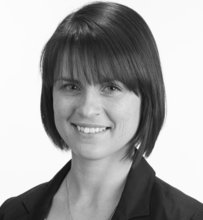Justyna Zwolak
Title of Talk: RAY-BASED FRAMEWORK FOR TUNING QUANTUM DOT DEVICES: TWO DOTS AND BEYOND
ABSTRACT:
Arrays of quantum dots (QDs) are one of the many candidate systems to realize qubits--the fundamental building blocks of quantum computers--and provide a platform for quantum computing. However, the current practice of manually tuning QDs is a relatively time-consuming procedure, inherently impractical for scaling up and other applications. Recently, we have proposed and demonstrated an auto-tuning paradigm that combines a machine learning (ML) algorithm with optimization routines to assist experimental efforts in tuning semiconductor QD devices [1,2]. Our approach provides a paradigm for fully automated experimental initialization through a closed-loop system that does not rely on human intuition and experience.
To address the issue of tuning arrays in higher dimensions, we expand upon our prior work and propose a novel approach in which we "fingerprint" the state space instead of working with full-sized two-dimensional scans of the gate voltage space. Using one-dimensional traces ("rays") measured ("shone") in multiple directions, we train an ML algorithm to recognize the relative position of the features characterizing each state (i.e., to "fingerprint") to differentiate between various state configurations. I will discuss the performance of the ray-based learning when used off-line on experimental scans of a double dot device and compare it with our previous, CNN-based approach [3]. I will also discuss how it extends to higher-dimensional systems. Using rays not only allows us to automate the recognition of states but also to significantly reduce (e.g., by 70 % for the two-dots case) the number of measured points required for tuning.
[1] S. S. Kalantre, J. P. Zwolak, S. Ragole, X. Wu, N. M. Zimmerman, M. D. Stewart, Jr., J. M. Taylor. Machine learning techniques for state recognition and auto-tuning in quantum dots. npj Quantum Inf. 5 (6): 1–10 (2019).
[2] J. P. Zwolak, T. McJunkin, S. S. Kalantre, J. P. Dodson, E. R. MacQuarrie, D. E. Savage, M. G. Lagally, S. N. Coppersmith, M. A. Eriksson, J. M. Taylor. Autotuning of Double-Dot Devices In Situ with Machine Learning. Phys. Rev. Applied 13, 034075 (2020).
[3] J. P. Zwolak, T. McJunkin, S. S. Kalantre, S. F. Neyens, E. R. MacQuarrie, M. A. Eriksson, and J. M. Taylor. Ray-Based Framework for State Identification in Quantum Dot Devices. PRX Quantum 2, 020335 (2021).
Keywords: machine learning; quantum dots; auto-tuning
BIO:

Justyna Zwolak is a Scientist in the Applied and Computational Mathematics Division at National Institute of Standards and Technology in Gaithersburg, MD. She received an M.Sc. in Mathematics from The Faculty of Mathematics and Informatics, Nicolaus Copernicus University, and a Ph.D. in Physics from the Faculty of Physics, Astronomy and Informatics, Nicolaus Copernicus University, in Toruń, Poland. She subsequently was a research associate in the Department of Physics at Oregon State University, at the STEM Transformation Institute at Florida International University, and an assistant research scholar in the Joint Center for Quantum Information and Computer Science at University of Maryland on College Park, MD.
Her research pursuits range from quantum information theory and machine learning to complex network analysis to mathematics and physics education. In her current work, Justyna uses machine learning algorithms and artificial intelligence, especially deep convolutional neural networks, to enhance and control quantum system and quantum computing platforms. In particular, she is investigating methods to automatically identify stable configurations of electron spins in semiconductor-based quantum computing. She is also developing a complete software suite that enables modeling of quantum dot devices, training recognition networks, and -- through mathematical optimization -- auto-tuning experimental setups. Success in this endeavor will eliminate the need for heuristic calibration and help scale up quantum computing into larger quantum dot arrays.

